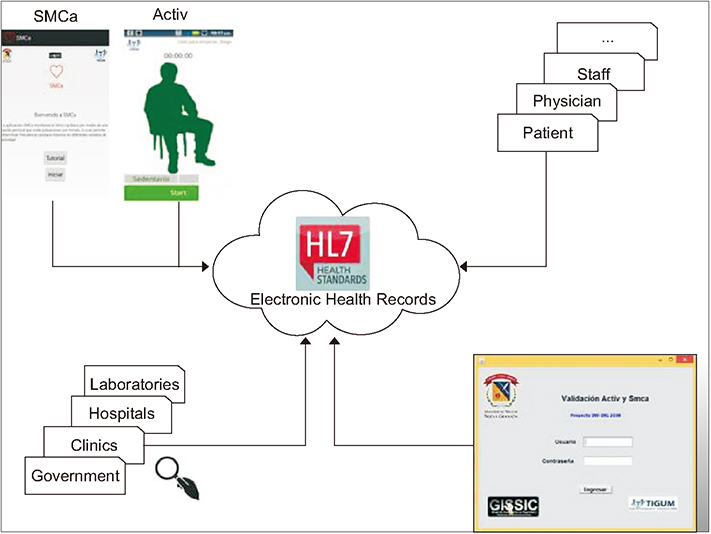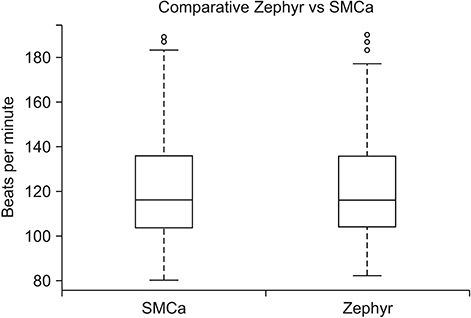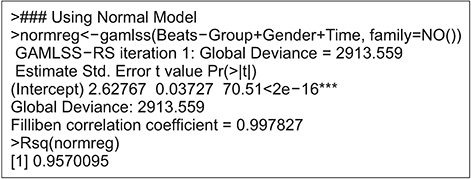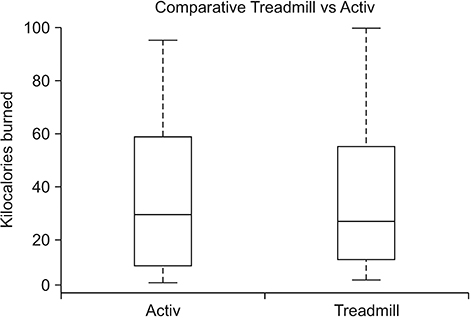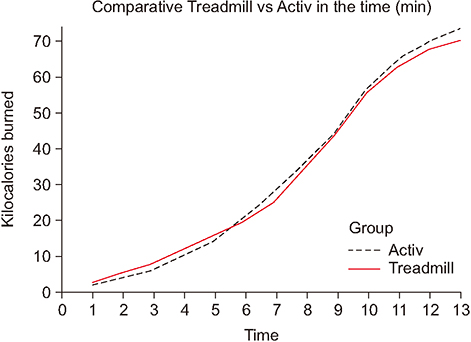Healthc Inform Res.
2018 Oct;24(4):276-282. 10.4258/hir.2018.24.4.276.
Effective Validation Model and Use of Mobile-Health Applications for the Elderly
- Affiliations
-
- 1Faculty of Engineering, Universidad Militar Nueva Granada, Bogota, Colombia. leonardo.ramirez@unimilitar.edu.co
- KMID: 2434542
- DOI: http://doi.org/10.4258/hir.2018.24.4.276
Abstract
OBJECTIVES
Due to the uncontrolled increase of the mobile health applications and their scarce use by elderly for reason of absence credibility of measurements by lack scientific support, the aim of this study was to evaluate the differences between the biophysical measurements based on standard instrument against a mobile application using controlled experiments with elderly to propose an effective validation model of the developed apps.
METHODS
The subjects of the study (50 people) were elderly people who wanted to check their weight and cardiac status. For this purpose, two mobile applications were used to measure energy expenditure based on physical activity (Activ) and heart rate (SMCa) during controlled walking at specific speeds. Minute-by-minute measurements were recorded to evaluate the average error and the accuracy of the data acquired through confidence intervals by means of statistical analysis of the data.
RESULTS
The experimental results obtained by the Activ/SMCa apps showed a consistent statistical similarity with those obtained by specialized equipment with confidence intervals of 95%. All the subjects were advised and trained on the use of the applications, and the initial registration of data to characterize them served to significantly affect the perceived ease of use.
CONCLUSIONS
This is the first model to validate a health-app with elderly people allowed to demonstrate the anthropometric and body movement differences of subjects with equal body mass index (BMI) but younger. Future studies should consider not only BMI data but also other variables, such as age and usability perception factors.
MeSH Terms
Figure
Reference
-
1. Research2Guidance. mHealth app developer economics 2016: the current status and trends of the mHealth app market [Internet]. Berlin, Germany: Research2Guidance;c2016. cited at 2018 Oct 15. Available from: http://research2guidance.com/r2g/r2g-mHealth-App-Developer-Economics-2016.pdf.2. Santamaria-Puerto G, Hernandez-Rincon E. Mobile medical applications: definitions, benefits and risks. Salud Uninorte. 2015; 31(3):599–607.
Article3. Ramirez L, Rodriguez Y. mHealth mobile application for energy balance. J Ind Neotechnol. 2016; 3(2):40–47.4. Boateng G, Batsis JA, Halter R, Kotz D. ActivityAware: an app for real-time daily activity level monitoring on the amulet wrist-worn device. In : Proceedings of 2017 IEEE International Conference on Pervasive Computing and Communications Workshops (PerCom Workshops); 2017 Mar 13–17; Kona, HI. p. 431–435.5. Lopez LJ, Alvarez DA. SMCa: a mobile cardiac monitoring system. Ciencia Y Poder Aereo. 2013; 8(1):91–96.6. Lysis: software for clinical laboratory with web and mobile applications [Internet]. Bogota, Colombia: Lysis;c2013. cited at 2018 Oct 15. Available from: http://lysis.co/.7. Pereira M, Almeida AM, Caixinha H. Exercit@rt mobile: monitoring of pulmonar rehabilitation in COPD. In : Proceedings of International Conference on Technology and Innovation in Sports, Health and Wellbeing (TISHW); 2016 Dec 1–3; Vila Real, Portugal. p. 1–8.8. Cifuentes Y, Beltran L, Ramirez L. Analysis of security vulnerabilities for mobile health applications. World Acad Sci Eng Technol Int J Health Med Eng. 2015; 9(9):1067–1072.9. OWASP Mobile Security Project [Internet]. Wakefield (MA): OWASP;c2017. cited at 2018 Oct 15. Available from: https://www.owasp.org/index.php/OWASP_Mobile_Security_Project.10. Grau I, Kostov B, Gallego JA, Grajales Iii F, Fernandez-Luque L, Siso-Almirall A. Assessment method for mobile health applications in Spanish: the iSYScore index. Semergen. 2016; 42(8):575–583.11. Vloria Nunez C, Caballero-Uribe CV. Advancements and challenges for implementing telemedicine and other information technologies (TICs). Salud Uninorte. 2014; 30(2):6–8.12. Miller NE, Strath SJ, Swartz AM, Cashin SE. Estimating absolute and relative physical activity intensity across age via accelerometry in adults. J Aging Phys Act. 2010; 18(2):158–170.
Article13. Brooks AG, Gunn SM, Withers RT, Gore CJ, Plummer JL. Predicting walking METs and energy expenditure from speed or accelerometry. Med Sci Sports Exerc. 2005; 37(7):1216–1223.
Article14. Marins JC, Fernandez MD, Peinado PJ. Accuracy of different equation to predict maximal heart rate in cycle ergometer. Arch Med Deporte. 2013; 30(1):14–20.15. Luo X. Analyzing the correlations between the uninsured and diabetes prevalence rates in geographic regions in the United States. In : Proceedings of 2017 IEEE/ACM International Conference on Connected Health: Applications, Systems and Engineering Technologies (CHASE); 2017 Jul 17–19; Philadelphia, PA. p. 44–50.16. Zaghbani N, Nakajima M, Nabetani H, Hafiane A. Modeling of reverse osmosis flux of aqueous solution containing glucose. Korean J Chem Eng. 2017; 34(2):407–412.
Article17. Jeon E, Park HA. Factors affecting acceptance of smartphone application for management of obesity. Healthc Inform Res. 2015; 21(2):74–82.
Article18. Gregoski MJ, Mueller M, Vertegel A, Shaporev A, Jackson BB, Frenzel RM, et al. Development and validation of a smartphone heart rate acquisition application for health promotion and wellness telehealth applications. Int J Telemed Appl. 2012; 2012:696324.
Article
- Full Text Links
- Actions
-
Cited
- CITED
-
- Close
- Share
- Similar articles
-
- Qualitative assessment of atopic dermatitis-related mobile applications in Korea
- The Perception of Laymen and Experts Toward Mobile Applications for Self-monitoring of Diet Based on in-depth Interviews and Focus Group Interviews
- Effectiveness of Mobile Health Application Use to Improve Health Behavior Changes: A Systematic Review of Randomized Controlled Trials
- Diabetes Management via a Mobile Application: a Case Report
- Development and Validation of a Postpartum Care Mobile Application for First-time Mothers

